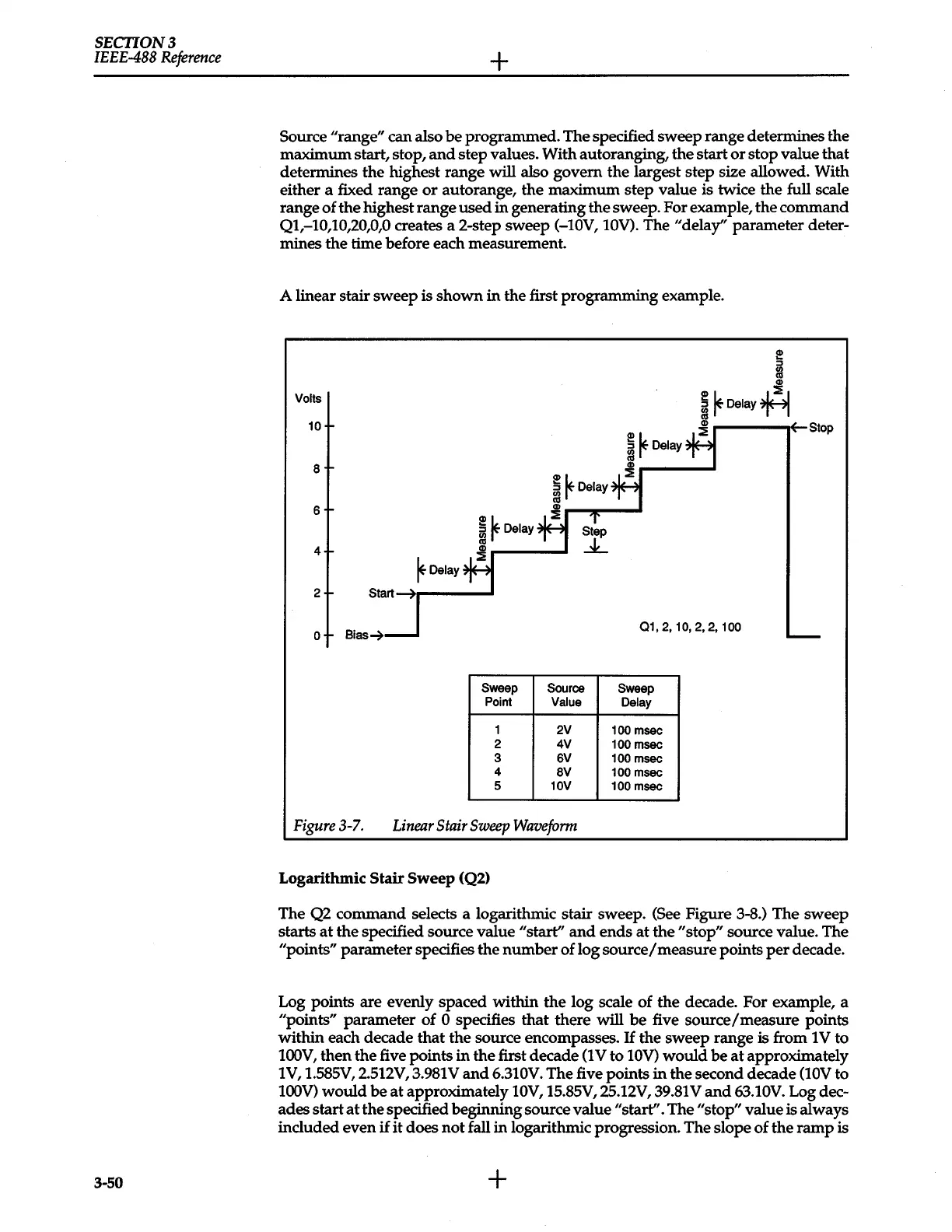SECTION3
IEEE-488
Reference
3-50
+
Source "range" can also
be
programmed. The specified sweep range determines the
maximum start, stop,
and
step values. With autoranging, the start
or
stop value that
determines the highest range
will
also govern the largest step size allowed. With
either a fixed range
or
autorange, the maximum step value is twice the full scale
range
of
the highest range
used
in
generating the sweep. For example, the command
Q1,-10,10,20,0,0 creates a 2-step sweep (-10V, 10V). The "delay'' parameter deter-
mines the time before each measurement.
A linear stair sweep
is
shown
in
the first programming example.
!
~
CD
Volts
i
~Delay+1
10
~
f-Stop
8
6
4
2
0
Bias-+
01,
2, 10, 2, 2, 100
Sweep Source
Sweep
Point Value
Delay
1 2V
100 msec
2
4V 100 msec
3 6V
100 msec
4
sv
100 msec
5 10V 100 msec
Figure3-7.
Linear
Stair
Sweep
Waveform
Logarithmic
Stair
Sweep
(Q2)
The Q2 command selects a logarithmic stair sweep. (See Figure 3-8.) The sweep
starts
at
the specified source value "start''
and
ends
at
the "stop" source value. The
"points" parameter specifies the
number
of log
source/
measure points
per
decade.
Log points are evenly spaced within the log scale of the decade. For example, a
"points" parameter of 0 specifies
that
there
will
be
five
source/measure
points
within each decade
that
the source encompasses.
If
the sweep range is from 1 V to
100V, then the five points
in
the
first decade
(1
V to 10V)
would
be
at
approximately
1
V,
1.585V, 2.512V,
3.981
V
and
6.310V. The five points
in
the second decade
(10V
to
100V)
would
be
at
approximately 10V, 15.85V,25.12V,39.81V
and
63.10V. Log dec-
ades start
at
the specified beginning source value "start''. The "stop" value
is
always
included even
if
it
does
not
fall
in
logarithmic progression. The slope of the
ramp
is
+
